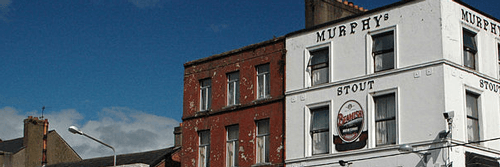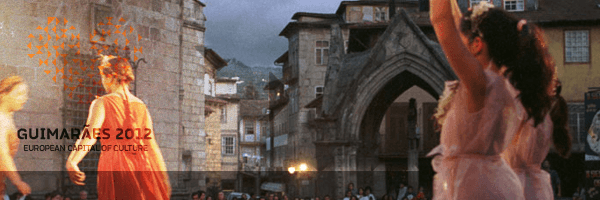The TMO list of cities to visit in 2012 continued.

Cork has always prided itself on being the ‘real’ capital of Ireland – less pretentious and Anglicized than Dublin, with an equally proud heritage of writers, musicians and even its own two stouts; Cork is well worth a visit on its own, or to be used as a base to visit the beauties of West Cork like Baltimore, Skibereen and Bantry – areas that have long been home to stars like Jeremy Irons, and David Puttnam, who know precisely what’s good for the soul.
Founded by St Fin barre in the 6th Century, on the banks of the river Lee, it was later developed by the Vikings and then the Normans. King John granted the city its charter in 1185. Throughout its history it’s played an important part in the development of Irish culture, and in the long fight for independence – during the war of Independence , in 1920, British troops burned the centre of the city to the ground.
Today’s city is a mix of the modern and traditional, with brand-name high-street stores nestling alongside authentic pubs serving up music and porter to your heart’s content. The city has a thriving arts scene and a nightlife that can happily match that of the Republic’s official capital.
St Fin Barre’s cathedral – there has been a church on this site since the founding of the city, and today’s cathedral, built in the 1860’s was designed by the architect William Burges
Visit the Lifetime Lab, a multi award winning visitor centre, located in Cork City’s former waterworks, overlooking the River Lee
Take a trip to Kinsale, just a half an hour from Cork city centre, for some of the best food in Ireland in one of its most beautiful coastal towns.
The Cork Guinness Jazz Festival – one of Ireland’s biggest and best festivals, that is as much about the craic as it is about the music (actually, it’s probably more about the craic)
The Cork Midsummer Festival – a two week celebration of contemporary arts and culture, with events (many of them free) by local and international artists staged throughout the city
Cork City on Discover Ireland (the official tourist board of Ireland site)
Cork City official municipal site
It’s not easy to be just 35 miles from Brussels and 97 from Amsterdam, at least in terms of tourism, but often being sandwiched in between bigger ‘draws’ can work to the advantage of a city (take for example TMO’s own Bologna which is often overlooked on the trip between Milan – Florence – Rome). It takes the pressure off, and allows the city to be discovered on its own terms rather than on some international reputation.
Antwerp has historically been a hugely succesful economic and cultural centre. The diamond capital of the world, it played host in the 17th Century to artists like Rubens, Van Dyck, Jordaens, and the two Teniers. It’s had its ups and downs, but the port of Antwerp is now once more one of the biggest in the world; Antwerp is the home of dEUS – one of TMO’s favourite bands, plus Zita Swoon, Mauro, Tim Vanhamel, and over the last twenty years the Antwerp Six, graduates of the city’s Royal Academy of Fine Arts have firmly established the city on the fashion stage.
As if Diamonds, Rock n’Roll, History and Haute Couture weren’t enough, there’s also great beer – what more could you ask for?
Grote Markt – The Market square of Antwerp – beautiful and vibrant with the impressive Brabo fountain at its centre, a perfect place to sit down and soak in the atmosphere
The Royal Museum of Fine Arts, a massive 7600 paintings, sculptures, drawings and prints, including masterpieces by the Flemish Primitives, Peter Paul Rubens and the Baroque, Henri De Braekeleer and the Flemish expressionists.
Spotted by locals | Antwerp
Antwerp.com
The Beer Passion Festival – the name says it all!
The Annual Christmas Market – during December the Grote Markt is filled with stalls selling Christmas fare.
 Guimarães was the first capital of Portugal, and is dominated by its huge castle, started in the 10th Century and expanded later in the 12th. Unesco has given the historic centre of the city World Heritage status, thanks to the excellent preservation of buildings from the medieval period right through to the 19th Century. Guimarães cultural significance is huge as well, with many deeming it the birthplace of Portuguese culture and of the Portuguese language.
Guimarães was the first capital of Portugal, and is dominated by its huge castle, started in the 10th Century and expanded later in the 12th. Unesco has given the historic centre of the city World Heritage status, thanks to the excellent preservation of buildings from the medieval period right through to the 19th Century. Guimarães cultural significance is huge as well, with many deeming it the birthplace of Portuguese culture and of the Portuguese language.
Nowadays, with a host of museums, galleries and the internationally renowned Centro Cultural Vila Flor, and half the population aged under thirty, Guimarães is one of the ‘must sees’ in any trip to Portugal – and the fact that it shares the title of European Capital of Culture 2012 with Maribor (Slovenia) makes this year a great time to go and visit.
The Castle – this huge structure, declared a national monument, was started as a monastery in the 10th Century, but given its location and constant attacks and intrusions by both the Moors and the Normans it evolved into a fully defensive structure – and an impressive one at that!
Toural Square – nowadays considered the heart of the city, this square dates back to the 17th Century (when it was outside the city’s walls – if you’re looking for a medieval square, visit Santiago Square)
Take the Guimarães cable car up to the Penha mountain (10mins travelling a distance of 1.7km climbing 400m), for great views of the city, and to enjoy a bit of nature.
Festas Gualterianas – takes place the first weekend in August, with lots of events culminating in the “Marcha Gualteriana” (Gualteriana march)
Nicolinas – a range of student festivities starting on the 29th of November and running to the 7th of December in honour of St Nicholas (Bishop of Mira in the 4th Century, and patron saint of students). A traditional festival involving lots of singing, dancing, and poetry recitals – not to be missed.
www.guimaraesturismo.com
www.guimaraes2012.pt
www.visitportugal.com